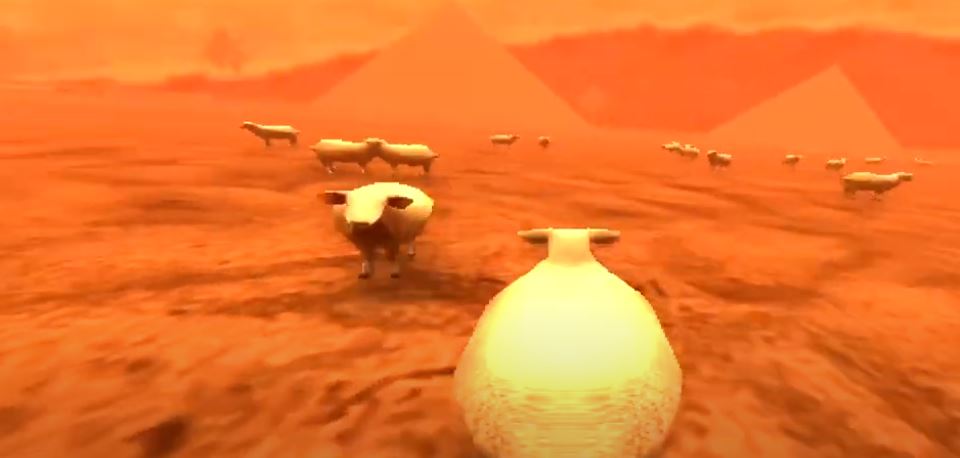Crazy Cattle 3D has significantly changed how independent gaming attracts attention in a crowded market. It can be found flourishing across GitHub repositories. The project, which is based on the hilariously chaotic concept of explosive sheep fighting across dynamic landscapes, offers a rush of adrenaline that is remarkably similar to a combination of dodgeball and chess, but with much more unpredictable jumps and collisions.
With the help of an incredibly powerful physics engine, Crazy Cattle 3D turns every match into an exciting spectacle in which survival is determined by momentum, accuracy, and shrewd strategy. Players use sheer kinetic force in place of traditional weapons, charging, launching, and headbutting their woolly avatars with noticeably greater skill on a variety of maps that require quick thinking and quick reactions.
| Information | Details |
|---|---|
| Game Title | Crazy Cattle 3D |
| Genre | Physics-based Battle Royale |
| Supported Platforms | Windows, Mac, Linux |
| Development Team | Indie Developers (Open Project on GitHub) |
| Launch Year | 2025 |
| Official Repository | Crazy Cattle 3D GitHub |
| Gameplay Features | Explosive sheep control, strategic collisions, physics mastery |
| Maps Included | Ireland, Iceland, New Zealand |
| Access Model | Free to Play |
Crazy Cattle 3D has significantly enhanced its mechanics with each update by utilizing open-source collaboration, making the game immensely adaptable for both casual players and competitive strategists. Indie games that prioritize skill-based systems over pay-to-win tactics have greatly decreased player fatigue over the last ten years, and Crazy Cattle 3D is a perfect example of this new trend.
As they build momentum down Irish hills, dodge volcanic hazards in Iceland, or soar across the towering cliffs of New Zealand, players are encouraged to think like both stunt coordinators and billiard champions thanks to the game’s playful physics. Players who become adept at reading terrain and timing collisions will receive subtle rewards in each environment, which is designed to promote strategic exploration.
Players have been praising Crazy Cattle 3D’s hilariously chaotic yet extremely tactical gameplay in Twitch streams, Reddit discussions, and Discord gaming groups in recent months. When a well-timed headbutt sends opponents reeling off the map with gratifying finality, it is evident that the physics-first movement system produces a true sense of accomplishment.

Through GitHub collaboration, developers continuously added features to Crazy Cattle 3D, including surprisingly inexpensive accessibility options like an instant-play version that runs in the browser and doesn’t require installation. This change significantly increased the game’s user retention among audiences worldwide and was especially helpful for time-constrained players. It also promoted impromptu multiplayer sessions.
Without sacrificing the depth of gameplay, Crazy Cattle 3D took advantage of the pandemic’s increased demand for portable, quick-to-enter gaming experiences. Players learn to master momentum and spatial awareness by doing, not waiting, as they are thrust into hectic combat scenarios instead of lengthy tutorials or bloated lobbies.
The maps in Crazy Cattle 3D are incredibly resilient environments for emergent strategy. The game rewards calculated risk-taking over brute force, as players frequently describe instances where a sudden downhill rush into an unwary opponent turned the tide of a match. Crazy Cattle 3D transformed from a peculiar side project on GitHub into a reputable case study in physics-based multiplayer design through strategic alliances and regular updates.
The emergence of other breakthrough hits, such as Untitled Goose Game and Human: Fall Flat, which both resonated with a broad audience by emphasizing playfulness over hyper-realism, is comparable to Crazy Cattle 3D’s journey in the context of independent development. The innovative aspect of Crazy Cattle 3D’s chaotic charm is how it makes each match feel unique, something that even multibillion-dollar franchises frequently find difficult to accomplish.
New Zealand’s treacherous map, enhanced physics calculations, and new special moves have all been added by the game’s developers in the last year, greatly increasing gameplay depth without overburdening players with extraneous complexity. There are indications that Crazy Cattle 3D’s already captivating arena may be expanded in future updates with new game modes, seasonal events, and even cooperative missions.
It is impossible to ignore how Crazy Cattle 3D’s humor has elevated it above a plethora of independent rivals. Gamers frequently characterize it as “Mario Kart meets a sheep rodeo,” encapsulating the uncommon harmony between slapstick humor and intense rivalry. Crazy Cattle 3D encourages players to approach gaming with a light heart and keen instincts by emphasizing humorous mechanics over gritty realism.
Crazy Cattle 3D’s success story provides a significantly better model for early-stage game developers: prioritize a fun core mechanic, embrace community-driven development, and create systems that reward creativity over hours of labor. Crazy Cattle 3D showed how even a completely outlandish idea could garner enduring loyalty by using open-source platforms strategically and keeping players informed.
Games like Crazy Cattle 3D are anticipated to continue gaining ardent, grassroots fan bases in the upcoming years as mainstream titles increasingly strive for cinematic storytelling and incredibly detailed graphics. Because of its focus on timing, momentum, and physics, players can always count on pure, enjoyable gameplay that never feels manipulated or overdone.
The energy that Crazy Cattle 3D embodies—chaotic, strategic, and refreshingly unpredictable—seems to be a striking reflection of the future of independent multiplayer gaming. Crazy Cattle 3D offers an experience that is both technically amazing and incredibly entertaining, whether you’re a competitive strategist honing your collision timing or a weekend warrior seeking a quick adrenaline rush.
